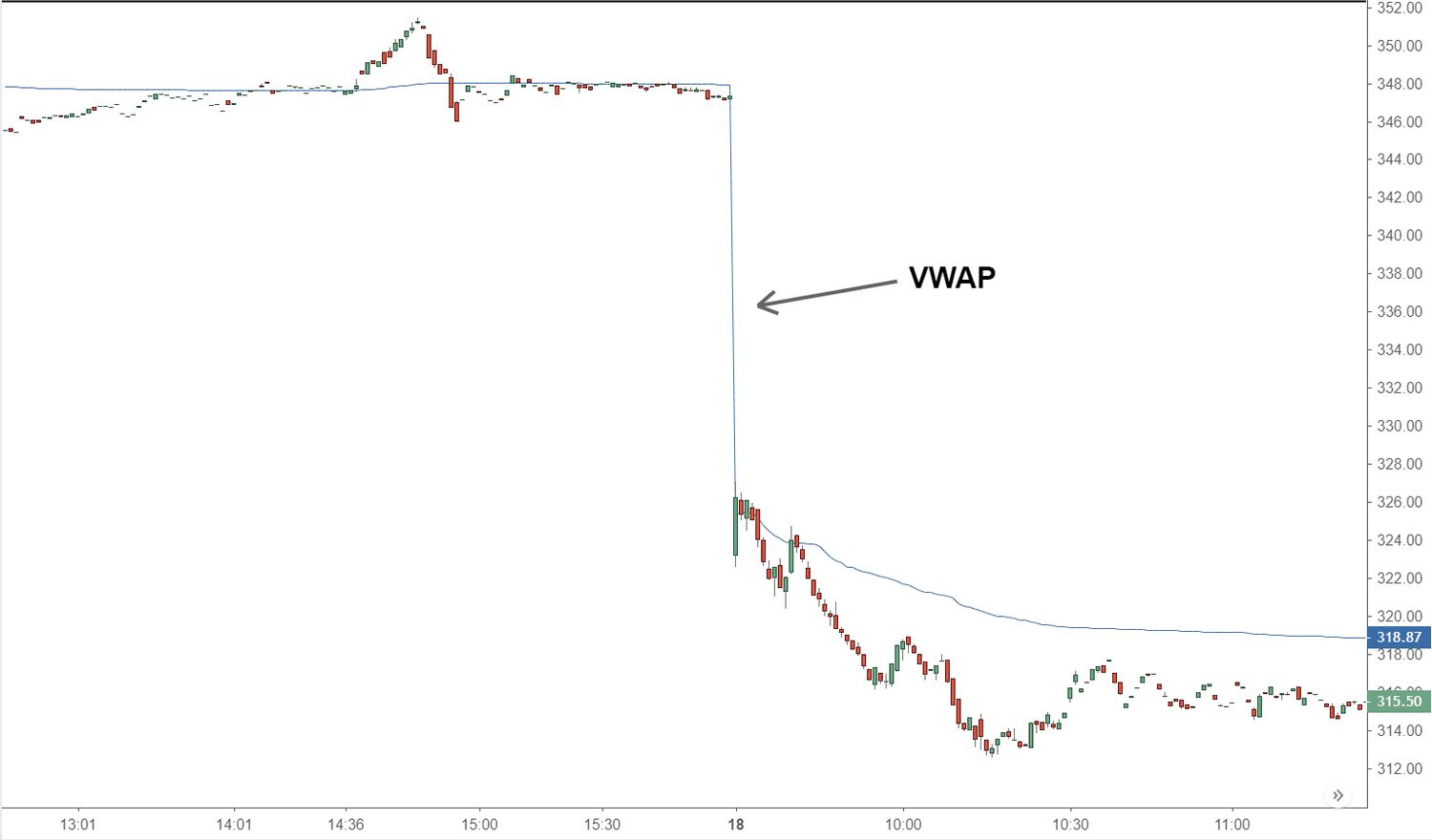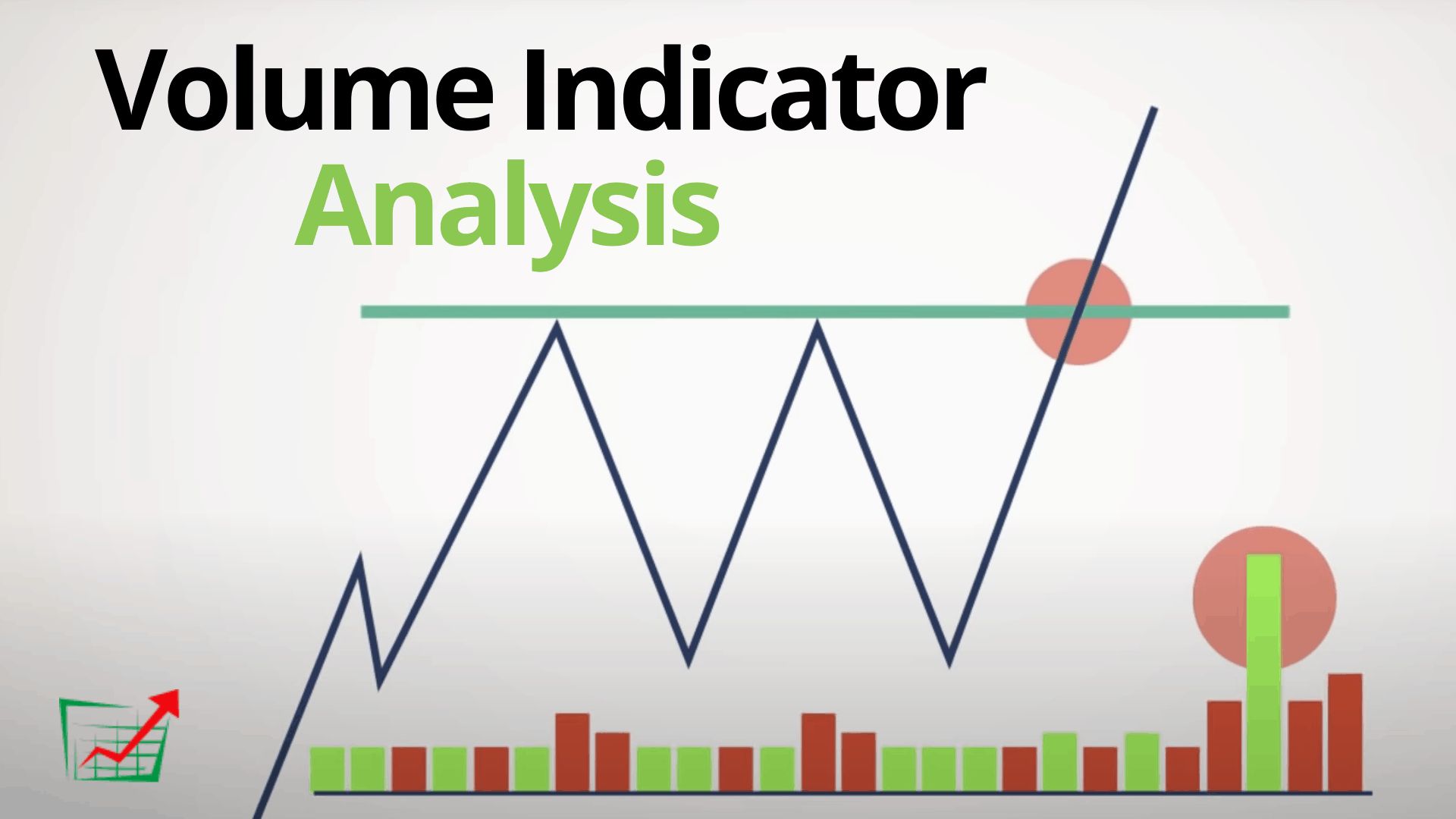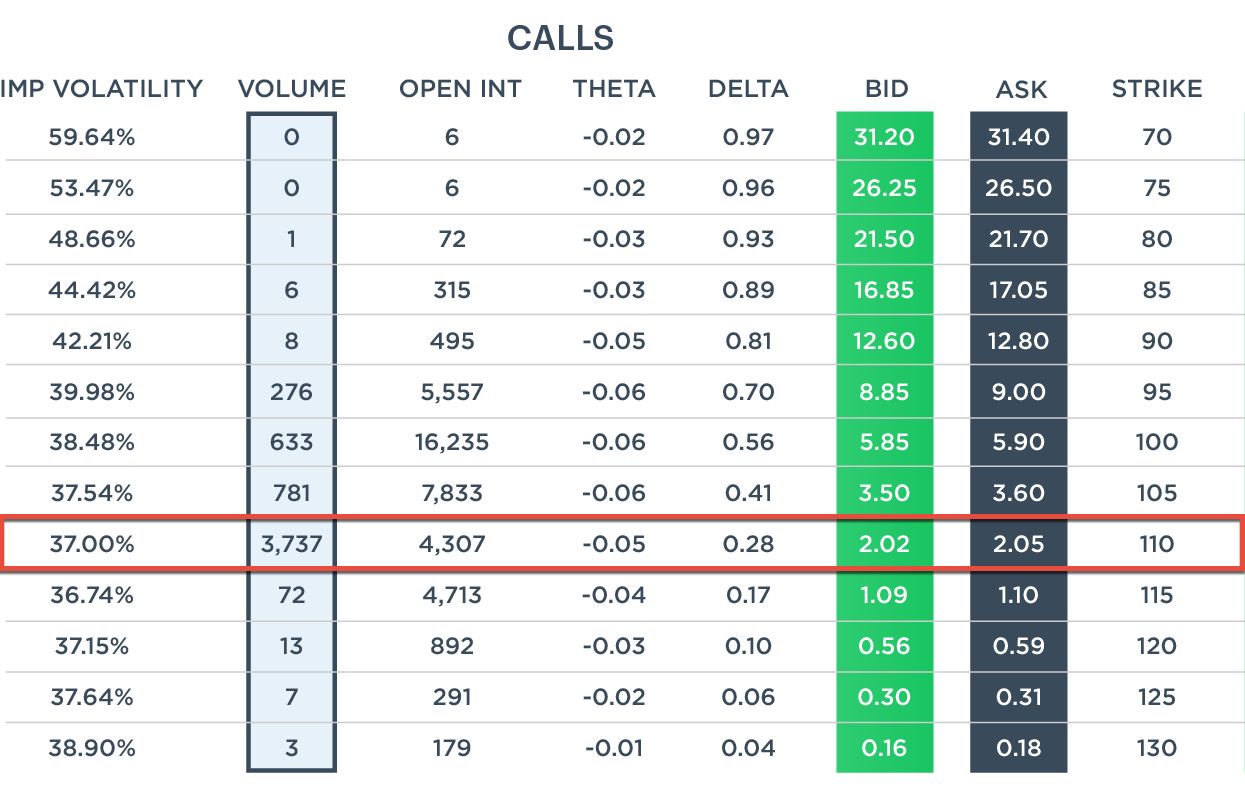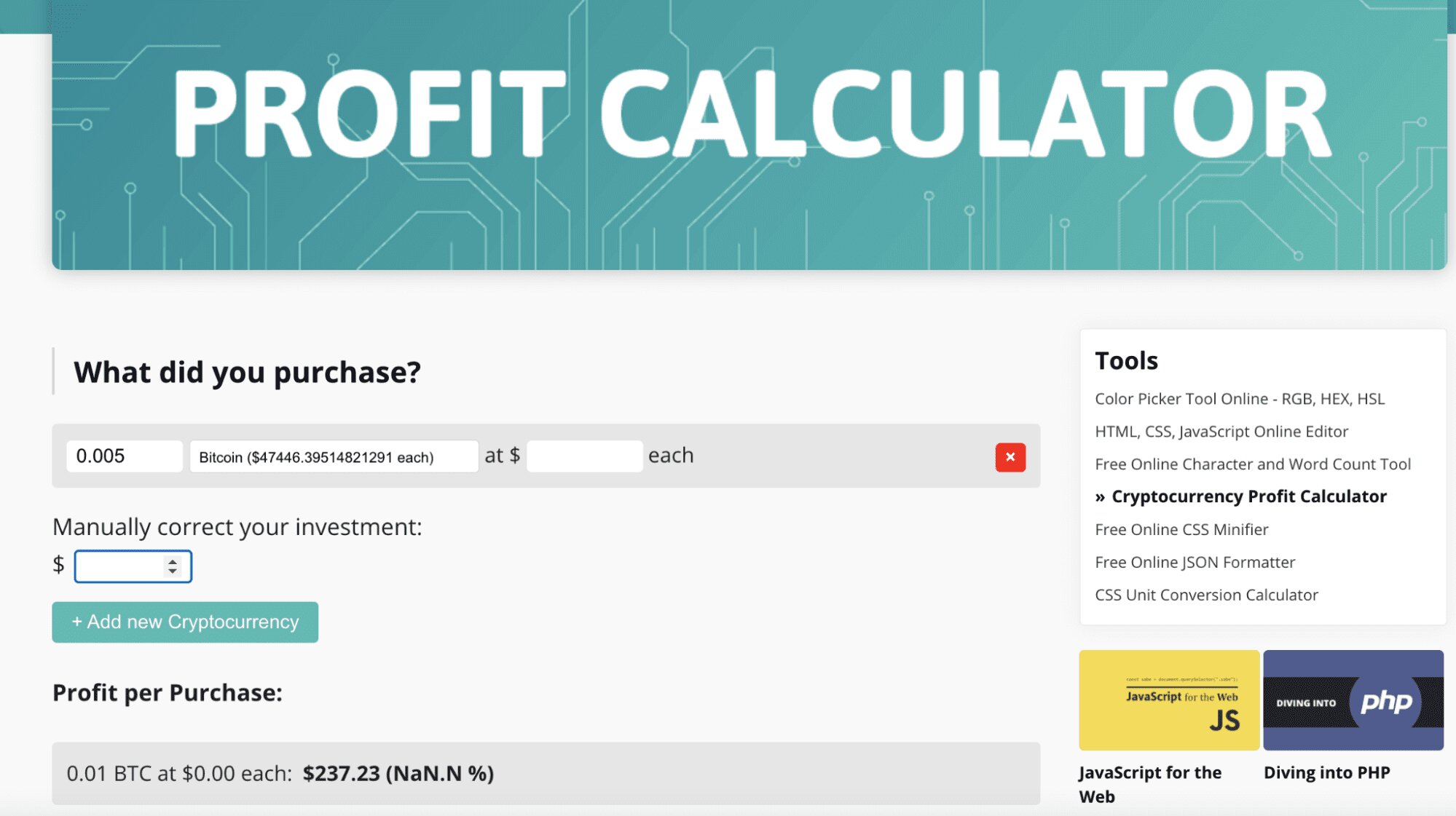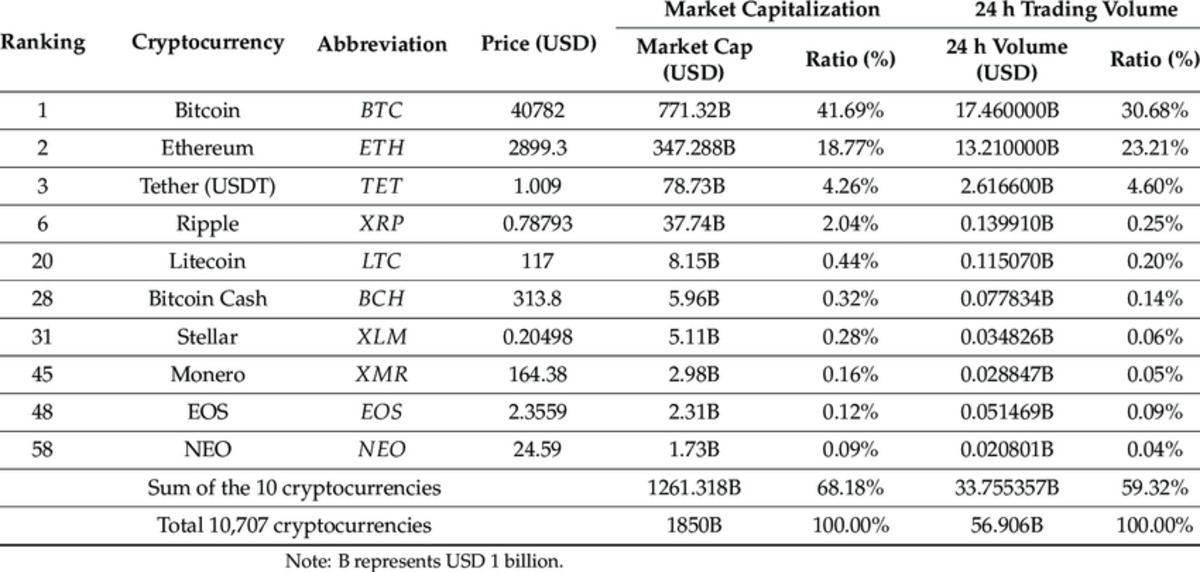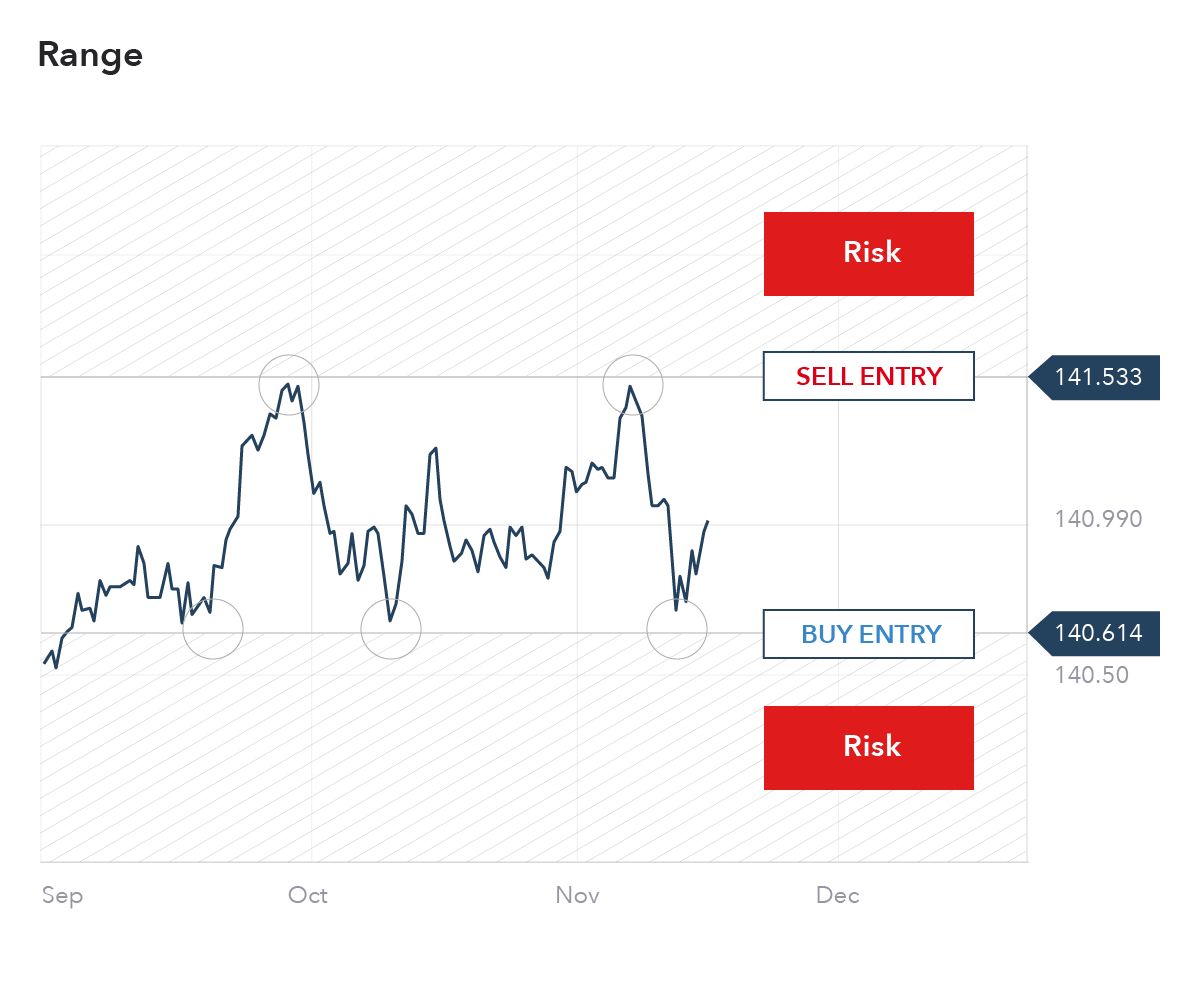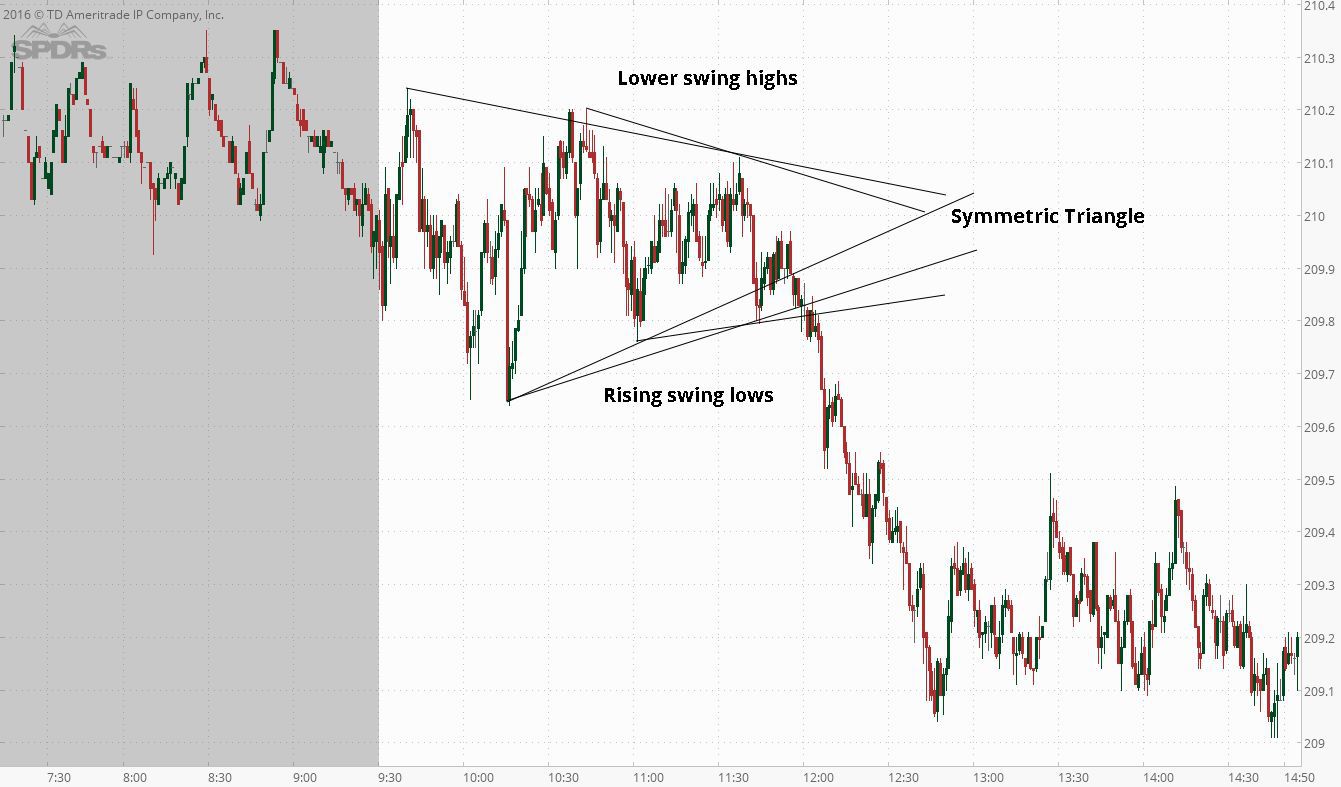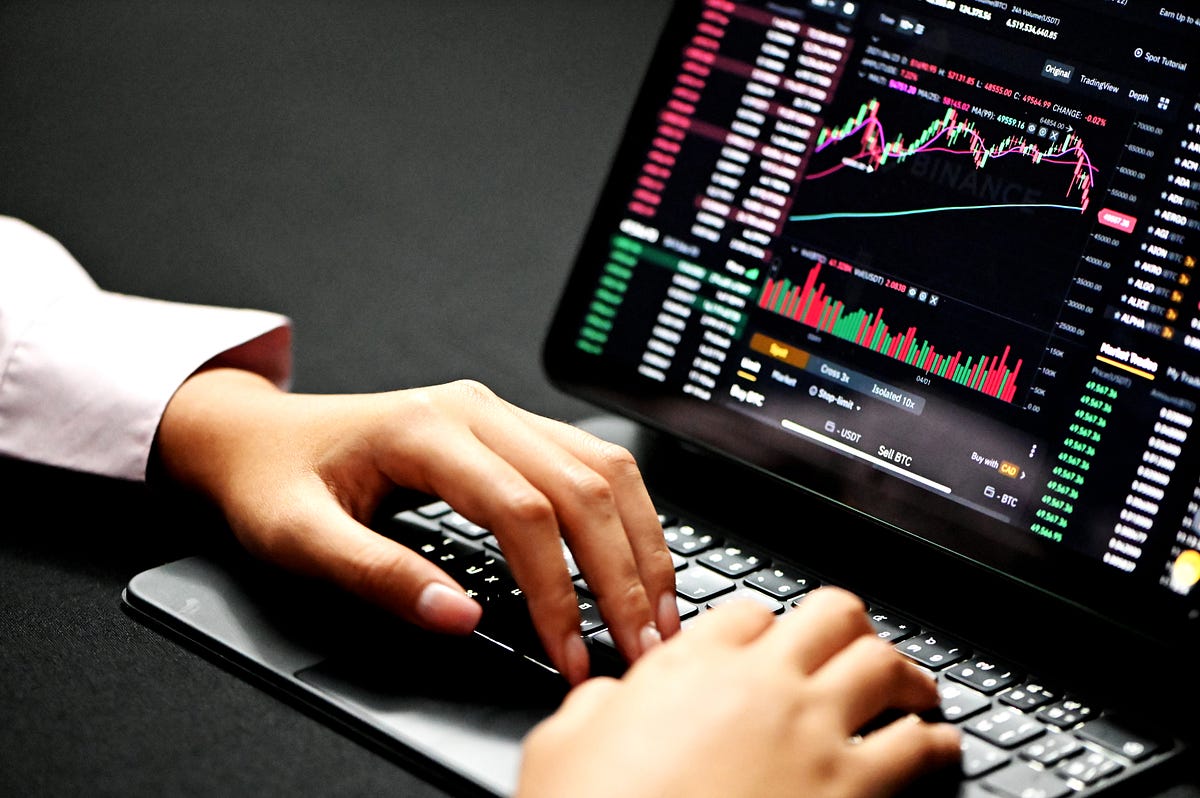Introduction
Welcome to the world of trading! If you’re new to the stock market or simply looking to expand your knowledge, you may have come across various trading terms and strategies. One such term that traders often encounter is VWAP, which stands for Volume Weighted Average Price.
VWAP is a widely used benchmark in trading, offering valuable insights into the average price investors paid for a particular security over a given period. It helps traders and investors make informed decisions by providing a reference point against which they can compare the actual price of a stock. Understanding VWAP and its significance in trading is essential for anyone looking to navigate the complex world of financial markets.
In this article, we will dive into the concept of VWAP, exploring its definition, calculation methodology, importance, advantages, limitations, and how it can be used in trading strategies. We will also debunk common misconceptions about VWAP and discuss its differences from other commonly used indicators, such as the moving average.
By the end of this article, you will have a comprehensive understanding of VWAP and be able to incorporate this powerful trading tool into your investment repertoire.
Definition of VWAP
Volume Weighted Average Price (VWAP) is a trading indicator that represents the average price at which a security has been traded throughout the day, weighted by the volume of each transaction. It takes into account both the price and volume of trades, providing a more accurate representation of the market sentiment.
VWAP is commonly used by institutional traders, such as hedge funds and large investment firms, to assess their executed trades and evaluate their performance against the market average. It is calculated on an intraday basis and is frequently updated throughout the trading session.
The VWAP line is plotted on a price chart, providing traders with a dynamic reference point for understanding the fair value of a security. Traders can compare the current price of a security to the VWAP line to determine whether it is overvalued or undervalued.
It is important to note that VWAP is typically used for intraday trading and is reset at the beginning of each trading session. This means that the VWAP indicator for a particular day does not carry over to the next trading day.
VWAP is not a standalone indicator but rather a tool that is used in conjunction with other technical analysis techniques and indicators. Traders often combine VWAP with moving averages, trendlines, and support/resistance levels to make more informed trading decisions.
Now that we have a clear understanding of what VWAP is, let’s take a closer look at how it is calculated.
How VWAP is Calculated
The calculation of VWAP involves the following steps:
- First, the volume of each trade is multiplied by its corresponding price to calculate the traded value.
- Next, the cumulative traded value is calculated by summing up the traded values of all the trades up to a specific point in time.
- Simultaneously, the cumulative volume is also calculated by summing up the volumes of all the trades up to the same point in time.
- Finally, the VWAP is derived by dividing the cumulative traded value by the cumulative volume.
Mathematically, the VWAP calculation can be represented as:
VWAP = Σ(Price * Volume) / ΣVolume
Traders typically use specialized software or trading platforms that automatically perform these calculations and plot the VWAP line on the price chart in real-time. This allows traders to have an up-to-date view of the VWAP as the trading session progresses.
It’s important to note that the VWAP calculation considers the volume of each trade, giving more weight to trades with larger volumes. Consequently, the VWAP line will be influenced more by high volume trades, reflecting the market’s sentiment based on the trading activity of institutional investors and other significant players.
Now that we know how VWAP is calculated, let’s explore why it is important in trading.
Why VWAP is Important in Trading
VWAP is an important tool in trading because it provides traders with valuable insights into market dynamics and helps them make better trading decisions. Here are a few key reasons why VWAP is important:
- Market benchmark: VWAP serves as a benchmark for traders to compare the price of a security with the average price at which it has been traded. It helps identify whether the current price is above or below the average, indicating potential overvalued or undervalued conditions.
- Institutional trader indicator: Since VWAP is widely used by institutional traders, it provides valuable information about the behavior and sentiment of significant market participants. Traders can gauge the impact of institutional activity on the price movement and make informed trading decisions based on this information.
- Trade evaluation tool: Individual traders can use VWAP to evaluate their own trades and assess their performance against the market average. By comparing the execution price of their trades with the VWAP, traders can determine whether they achieved a favorable price or if their trades were executed at a disadvantage.
- Trend identification: VWAP can help traders identify trends in the market. If the price consistently remains above the VWAP, it indicates a bullish trend, while a price consistently below the VWAP suggests a bearish trend. Traders can use this information to align their trading strategies with the prevailing market sentiment.
- Anchoring point for algorithms: Many algorithmic trading strategies incorporate VWAP as a reference point. VWAP algorithms are designed to execute trades based on market conditions relative to the VWAP. These algorithms aim to achieve the best possible execution price while minimizing market impact.
By understanding the importance of VWAP in trading, traders can harness its power to gain insights and improve their decision-making process. Now, let’s take a look at the advantages of using VWAP as a trading tool.
Advantages of VWAP
VWAP offers several advantages for traders, making it a popular tool in the trading community. Here are some key advantages of using VWAP:
- Accurate representation of market sentiment: VWAP takes into account both the price and volume of trades, providing a more accurate representation of market sentiment. By incorporating volume, VWAP gives more weight to significant trades, reflecting the actions of institutional investors and other major players.
- Identifying price inefficiencies: VWAP helps traders to identify potential price inefficiencies by comparing the current price of a security with the average price at which it has been traded. If the current price deviates significantly from the VWAP, it may suggest an opportunity to enter a trade at a favorable price.
- Confirmation of trend: VWAP can be used to confirm the prevailing trend in the market. When the price consistently stays above the VWAP, it indicates a bullish trend, while a price below the VWAP suggests a bearish trend. Traders can use this confirmation to align their trades with the overall market sentiment.
- Evaluation of execution performance: Traders can evaluate their execution performance by comparing their trade execution price with the VWAP. If the trade execution price is better than the VWAP, it indicates a favorable execution. This evaluation can help traders assess the quality of their trades and make necessary adjustments to improve their performance.
- Support and resistance levels: VWAP can act as dynamic support or resistance levels within the trading session. Traders often observe how the price interacts with the VWAP, seeking potential price reversals or breakouts when the price crosses above or below the VWAP.
By leveraging the advantages of VWAP, traders can gain valuable insights into market dynamics, identify trading opportunities, and make more informed and profitable trading decisions. However, it is important to acknowledge the limitations of VWAP, which we will explore in the next section.
Limitations of VWAP
While VWAP is a valuable trading tool, it is important for traders to be aware of its limitations. Here are some key limitations of VWAP:
- Intraday focus: VWAP is calculated on an intraday basis and resets at the beginning of each trading session. This means that VWAP does not carry over from one trading day to the next. As a result, it may not provide the same level of insight for longer-term analysis or for traders who hold positions overnight.
- Sensitivity to high volume trades: VWAP gives more weight to trades with higher volumes, which can result in a skewed average if there are a few disproportionately large trades. This may lead to a distorted VWAP line and potentially misrepresent the true average price.
- Delayed signal: Since VWAP is calculated based on historical volume and price data, it provides a delayed signal of market sentiment. Traders relying solely on VWAP may experience delays in identifying new trends or shifts in market sentiment.
- Not suitable for illiquid stocks: VWAP may not be as effective for illiquid stocks with low trading volumes. In such cases, the VWAP line lacks accuracy and may not provide reliable information for traders.
- Does not account for other market factors: VWAP focuses solely on volume-weighted average prices and does not consider other market factors such as news events, earnings reports, or macroeconomic factors. Traders need to supplement VWAP analysis with other tools and indicators to gain a more comprehensive understanding of the market.
It is important for traders to consider these limitations and use VWAP in conjunction with other indicators and analysis techniques to make well-informed trading decisions.
Now, let’s shift our focus to how traders can effectively use VWAP in their trading strategies.
How to Use VWAP in Trading Strategies
VWAP can be a powerful tool when incorporated into trading strategies. Here are a few ways traders can effectively use VWAP:
- Trend confirmation: Traders can use VWAP to confirm the prevailing market trend. If the price remains consistently above the VWAP, it indicates a bullish trend, while a price below the VWAP suggests a bearish trend. Traders can align their trades with the trend and look for opportunities to enter or exit positions.
- Reversal and breakout signals: When the price crosses above or below the VWAP, it can signal potential reversals or breakouts. Traders can monitor these crossovers to identify possible trend reversals or breakout opportunities.
- Dynamic support and resistance levels: VWAP can act as dynamic support or resistance levels within the trading session. Traders often observe how the price reacts to the VWAP, looking for potential reversals or breakouts when the price approaches or breaks through the VWAP.
- Trade execution: Traders can use VWAP as a benchmark to assess the quality of their trade execution. By comparing the execution price with the VWAP, traders can evaluate whether their trades were executed at a favorable price or at a disadvantage.
- VWAP bands: Some traders use multiple deviations from the VWAP to create bands around it. These bands can provide additional reference points for identifying overbought or oversold conditions and potential reversal zones.
- VWAP in conjunction with other indicators: Traders often combine VWAP with other technical analysis indicators, such as moving averages, trendlines, or oscillators, to strengthen their trading strategies. This combination can help validate signals and increase the probability of successful trades.
It is important to remember that VWAP is not a standalone trading strategy but a tool that can enhance existing trading approaches. Traders should consider their overall trading plan, risk tolerance, and timeframes when incorporating VWAP into their strategies.
Now that we have explored the ways to use VWAP in trading, let’s compare it with another widely used indicator—moving averages.
VWAP vs. Moving Average
VWAP and moving averages are both popular technical analysis indicators used by traders to identify trends, potential reversals, and support and resistance levels. While they have some similarities, there are also key differences between VWAP and moving averages. Let’s compare them:
Calculation Method: VWAP is calculated using volume-weighted average prices, taking into account both price and trading volume. On the other hand, moving averages calculate the average price over a specified period, without considering trading volume.
Timeframe: VWAP is calculated on an intraday basis and is reset at the start of each trading session. In contrast, moving averages can be calculated for various timeframes, such as daily, weekly, or even monthly.
Usage: VWAP is often used by institutional traders to evaluate the execution performance of trades and assess market sentiment. It is also useful for identifying potential price inefficiencies and confirming market trends. Moving averages, on the other hand, are commonly used by traders to identify trends, generate buy or sell signals, and define support and resistance levels.
Sensitivity: VWAP gives more weight to higher volume trades, making it more sensitive to significant market activity. Moving averages, however, treat each price data point equally and are less influenced by individual high-volume trades.
Interpretation: Due to its volume-weighted nature, VWAP focuses more on the actions of institutional investors and other major participants. It provides insights into the average price paid by these market participants and can act as a reference point for evaluating execution performance. Moving averages, on the other hand, provide a smooth line that represents the average price over a specific time period and are widely used to identify trends and potential support or resistance levels.
Traders often use both VWAP and moving averages in their analysis to complement each other and gain a more comprehensive view of the market. While VWAP provides insights into short-term intraday trends and execution performance, moving averages offer a broader perspective on longer-term trends and support/resistance levels.
Now, let’s address some common misconceptions about VWAP.
Common Misconceptions About VWAP
Despite its widespread use, there are several common misconceptions about VWAP that traders should be aware of. Let’s debunk some of these misconceptions:
- VWAP predicts future price movements: One common misconception is that VWAP can predict future price movements. In reality, VWAP is a lagging indicator that reflects past trading activity. It provides insights into historical market sentiment but does not have predictive power on its own.
- VWAP works well in all market conditions: While VWAP can be a valuable trading tool, it may not work equally well in all market conditions. It is more effective in liquid markets with sufficient trading volume. In illiquid or choppy markets, VWAP calculations may be less reliable and produce less accurate signals.
- VWAP is the holy grail of trading: Some traders may mistakenly believe that VWAP is a foolproof trading strategy. However, like any other trading tool, VWAP has its limitations. It is important to use VWAP in conjunction with other technical analysis tools and indicators to enhance trading strategies.
- VWAP is the same as the average price: While VWAP is a form of average price, it is different from a simple arithmetic average. VWAP takes into account the volume of each trade, weighting each transaction based on its volume. This makes VWAP more representative of market sentiment and less influenced by small trades.
- All VWAP lines are the same: Each trading platform and software may have its own method of calculating VWAP. As a result, the exact VWAP values and shapes of the VWAP line may vary slightly between different platforms. Traders should be aware of the specific calculations used by their chosen platform.
By dispelling these misconceptions, traders can have a more realistic understanding of the capabilities and limitations of VWAP. It is essential to use VWAP as a part of a comprehensive trading strategy and consider it in the broader context of other technical analysis tools and market factors.
Now, let’s summarize the key points discussed in this article.
Conclusion
Volume Weighted Average Price (VWAP) is a powerful tool in trading that provides traders with valuable insights into market dynamics and helps them make informed trading decisions. By calculating the average price weighted by volume, VWAP offers a more accurate representation of market sentiment and serves as a benchmark for price evaluation.
In this article, we explored the definition of VWAP and how it is calculated. We also discussed the importance of VWAP in trading, including its role as a market benchmark, an institutional trader indicator, and a tool for trade evaluation. Additionally, we highlighted the advantages of VWAP, such as its accurate representation of market sentiment and its ability to identify price inefficiencies and confirm trends.
However, it is crucial to acknowledge the limitations of VWAP, including its intraday focus, sensitivity to high volume trades, and inability to account for other market factors. Traders should use VWAP in conjunction with other indicators and analysis techniques to mitigate these limitations and gain a comprehensive understanding of the market.
Furthermore, we compared VWAP with moving averages, emphasizing the differences in calculation methodology, timeframe, interpretation, and usage. While both tools have their merits, combining VWAP with moving averages can provide traders with a more well-rounded analysis and enhance their trading strategies.
Finally, we addressed common misconceptions about VWAP, such as its predictive power and universality in all market conditions. By dispelling these misconceptions, traders can utilize VWAP more effectively and appreciate its value as a versatile trading tool.
In conclusion, VWAP is an invaluable addition to any trader’s arsenal, offering insights into market sentiment, identifying trends, and evaluating trade execution. By understanding VWAP and integrating it into their trading strategies, traders can make more informed decisions and increase their chances of success in the dynamic world of financial markets.







